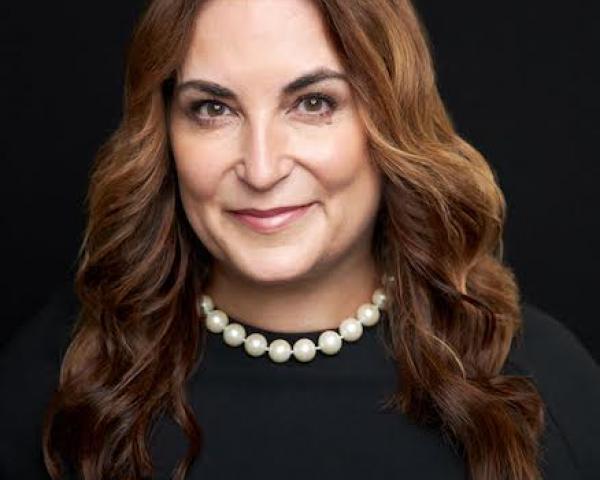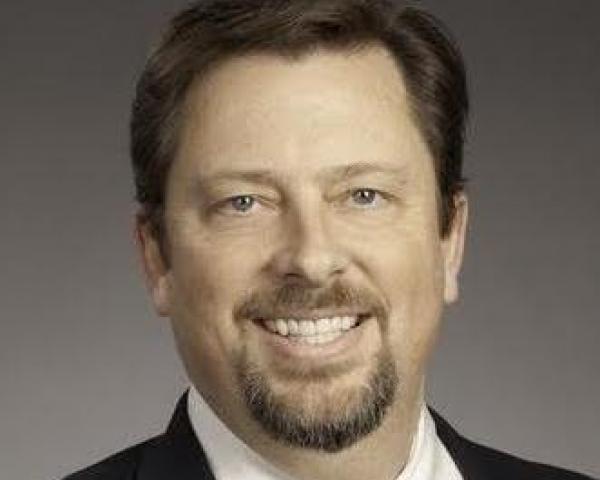It's Groundhog Day for WC Claims Handling
Why have attempted fixes via legislation and technology failed to fulfill promises for decades, for almost a generation of workers?

Why have attempted fixes via legislation and technology failed to fulfill promises for decades, for almost a generation of workers?

Get Involved
Our authors are what set Insurance Thought Leadership apart.
|
Partner with us
We’d love to talk to you about how we can improve your marketing ROI.
|

John Bobik has actively participated in establishing disability insurance operations during an insurance career spanning 35 years, with emphasis on workers' compensation in the U.S., Argentina, Hong Kong, Australia and New Zealand.
Here are the questions to ask to ensure that your employee assistance program provides robust help for employees' mental health.

 Are EAPs Effective?
While the research on the effectiveness of EAPs is limited, studies have found that employees' use of EAPs enhanced outcomes, especially in "presenteeism" (how healthy and productive employees are), life satisfaction, functioning and often absenteeism (Joseph, et al., 2017; Frey, Pompe, Sharar, Imboden, & Bloom 2018; Attridge et al., 2018; Richmond, et al., 2017). In one longitudinal, controlled study, EAP participants were more likely than non-EAP participants to see a reduction in anxiety and depression (Richmond, et al, 2016). Another matched control study found that users of EAP services often reduced their absenteeism more quickly than non-EAP users experiencing similar challenges (Nunes, 2018). In another longitudinal study (Nakao, et al, 2007), 86% of people who were suicidal when they engaged with their EAP were no longer suicidal at two years follow-up. Researchers have concluded that, while not all EAPs are created equal, they often provide accessible services that are effective at improving employee mental health and well-being.
See also: Impact on Mental Health in Work Comp
Are EAPs Prepared to Support an Employer Facing an Employee Crisis With Suicide?
When it comes to the life-and-death issue of suicide, EAPs have the potential to provide evidence-based suicide prevention, intervention and postvention services to employers. The EAPs’ contribution to the comprehensive workplace suicide prevention strategy is essential, and many would benefit from annual state-of-the-art training in evidence-based methods of suicide risk formulation and treatment to help distressed employees get back on their feet. Social workers, who provide the majority of EAP clinical services in the U.S., often report having no formal training in suicide formulation, response and recovery (Feldman & Freedenthal, 2006; Jacobson et al., 2004), so annual continuing education on suicide intervention and suicide grief support is often helpful to providers. Once trustworthy and credentialed providers have been identified, they should be highlighted in the “suicide crisis” protocol, so that companies are not trying to do this leg work in the midst of a crisis.
If one of the main messages in suicide prevention is “seek help,” we need to make sure the providers are confident and competent with best practices approaches to alleviating suicidal despair and getting people back on track to a life worth living. Thus, dedicated employers will evaluate and even challenge their EAP providers to demonstrate continuing education in the areas of suicide prevention, intervention and postvention skills. In fact, some states are mandating that all mental health professionals, including licensed providers of EAP services, have some sort of continuing training in suicide risk formulation and recovery.
Do Employees Know About the Benefit of Their EAP?
In addition to making sure the providers have the needed skills, companies need to make sure that their employees know when and how to access the care. Recently, the American Heart Association and CEO Roundtable worked with experts in the behavioral health field to develop a white paper for employers, which includes seven specific actions employers can take to improve the mental health of their employees (Center for Workplace Health, American Heart Association, 2019). The report can be viewed online here. Dr. Jodi Frey, expert panelist for the report and internationally recognized expert in the EAP and broader behavioral health field recommends that “employers need carefully consider their workplace’s needs when selecting an EAP, and then should work with their EAP as a strategic partner to develop programs and communications that encourage utilization of the program and continued evaluation to improve services over time.” (Dr. Jodi Frey, personal communication, March 18, 2019).
Employers that are mindful of their workers’ well-being will continually promote well-vetted and employee-backed resources throughout the career of the workers. Leadership testimonials of the efficacy of the resources after the leaders have used them for their own mental health would bring credibility to the resources and model appropriate self-care to the employees. Bringing the resources on-site to the workers (and not waiting until the workers stumble upon the resources) is another way to break through the barriers to care. The Employee Assistance Society for North American (EASNA) developed a guide to help employers evaluate EAPs and determine appropriate vendors. The guide also can be used to help employers evaluate their current EAP and decide if needs are being met or if more attention to what services should be offered needs to be addressed. The guide can be downloaded free.
Are There Different Types of EAPs?
Much diversity exists in EAP structure and quality (Frey, et al, 2018). Some companies use internal EAPs, where providers are also employees of the company. This arrangement often provides the benefit of having an immediate resource that has clear knowledge of the company and industry culture. Evaluation of internal EAPs has found increased utilization, customization and supervisor referrals (Frey, et al, 2018); however, there are some drawbacks. Internal EAPs, because they are so closely connected to the company, run the risk of being perceived as having blurred lines of confidentiality and objectivity. By contrast, external EAPs are often more diverse and can respond 24/7 across a vast geography. Because of these benefits and consequences, many companies have moved to a hybrid model to get the best of both models.
Hybrid EAPs often have an internal employee to manage the EAP and to work with managers and employees on critical incident response, strategic planning and organizational change, and to provide onsite assessment and problem resolution. They can be an important ally for the employer to understand the potential for an EAP and to help evaluate whether EAP providers are effective in their response and offering high-quality services (Frey, 2017).
See also: What if They Say ‘Yes’ to Suicide Question?
EAPs are most effective when they understand the industry and organizational culture, have business acumen and can adapt to changes in organizational structure (Frey, et al., 2017; Frey, et al., 2018). Thus, employers seeking to find a best fit for their employees will interview mental health providers about their knowledge of the unique stressors and strengths in the industry. Some industries (e.g., emergency responders and aviation) have gone so far as to credential mental health providers as being specialists in their industry to avoid a mismatch.
Case Study From the COO of a Construction Contractor
"We had an issue where our EAP was referring counselors outside of our healthcare providers, so, after the three free sessions, the participant learned they could only continue with the suggested provider at $150 a session; so the employees would drop out. My understanding is that counseling often takes around seven sessions to have a sustained impact, so, I put in a mandate with our HR team to renegotiate our EAP to ONLY refer in-network counselors, or they would pay for the continued care.
"We then incorporated our EAP into our safety program. When there is a serious accident, we deploy counselors and have our EAP involved for post-accident assistance to our employees. Accidents can bring up traumatic responses from our employees, and these experiences bring up memories from other accidents they may have been involved in or around. This cumulation of trauma can be highly distressing for them.
"In the early years, we had to work through the skepticism that the EAP would notify management of anyone that used the service. Since HIPAA came into play, we have less of this skepticism. The employees thought they would get fired or laid off first if they had issues.
"I’ve worked with our safety and wellness groups to actually pick up and call the EAP for someone in distress and get them on the phone. Once they lay the groundwork with the counselor, they hand the phone over and leave and let the employee get the help they need. This helps break down the stigma, and some people just don’t have the courage or have a mental block about picking up the phone for help. This has been VERY effective to get those in need the help they need.
"We promote our EAP in our weekly newsletter, and we also have business cards with the information, and we utilize hard-hat stickers that have all the information. This helps it be available when they need it.
"I’ve also encouraged our managers to use the system so they can promote it from their point of view. This also has helped remove the stigma around using the EAP. I also talk when in front of our employees about the program and educate them so they will use it. Our utilization rate is the highest in our EAP network, and I think this is the reason why."
15 Questions Workplaces Should Ask to Strengthen the Mental Health Safety Net
Employers should remember they are the customers of their EAP, and they should do the due diligence to make sure they are getting the best benefit possible. Here are 15 questions employers should ask their EAP to get the best services possible:
Are EAPs Effective?
While the research on the effectiveness of EAPs is limited, studies have found that employees' use of EAPs enhanced outcomes, especially in "presenteeism" (how healthy and productive employees are), life satisfaction, functioning and often absenteeism (Joseph, et al., 2017; Frey, Pompe, Sharar, Imboden, & Bloom 2018; Attridge et al., 2018; Richmond, et al., 2017). In one longitudinal, controlled study, EAP participants were more likely than non-EAP participants to see a reduction in anxiety and depression (Richmond, et al, 2016). Another matched control study found that users of EAP services often reduced their absenteeism more quickly than non-EAP users experiencing similar challenges (Nunes, 2018). In another longitudinal study (Nakao, et al, 2007), 86% of people who were suicidal when they engaged with their EAP were no longer suicidal at two years follow-up. Researchers have concluded that, while not all EAPs are created equal, they often provide accessible services that are effective at improving employee mental health and well-being.
See also: Impact on Mental Health in Work Comp
Are EAPs Prepared to Support an Employer Facing an Employee Crisis With Suicide?
When it comes to the life-and-death issue of suicide, EAPs have the potential to provide evidence-based suicide prevention, intervention and postvention services to employers. The EAPs’ contribution to the comprehensive workplace suicide prevention strategy is essential, and many would benefit from annual state-of-the-art training in evidence-based methods of suicide risk formulation and treatment to help distressed employees get back on their feet. Social workers, who provide the majority of EAP clinical services in the U.S., often report having no formal training in suicide formulation, response and recovery (Feldman & Freedenthal, 2006; Jacobson et al., 2004), so annual continuing education on suicide intervention and suicide grief support is often helpful to providers. Once trustworthy and credentialed providers have been identified, they should be highlighted in the “suicide crisis” protocol, so that companies are not trying to do this leg work in the midst of a crisis.
If one of the main messages in suicide prevention is “seek help,” we need to make sure the providers are confident and competent with best practices approaches to alleviating suicidal despair and getting people back on track to a life worth living. Thus, dedicated employers will evaluate and even challenge their EAP providers to demonstrate continuing education in the areas of suicide prevention, intervention and postvention skills. In fact, some states are mandating that all mental health professionals, including licensed providers of EAP services, have some sort of continuing training in suicide risk formulation and recovery.
Do Employees Know About the Benefit of Their EAP?
In addition to making sure the providers have the needed skills, companies need to make sure that their employees know when and how to access the care. Recently, the American Heart Association and CEO Roundtable worked with experts in the behavioral health field to develop a white paper for employers, which includes seven specific actions employers can take to improve the mental health of their employees (Center for Workplace Health, American Heart Association, 2019). The report can be viewed online here. Dr. Jodi Frey, expert panelist for the report and internationally recognized expert in the EAP and broader behavioral health field recommends that “employers need carefully consider their workplace’s needs when selecting an EAP, and then should work with their EAP as a strategic partner to develop programs and communications that encourage utilization of the program and continued evaluation to improve services over time.” (Dr. Jodi Frey, personal communication, March 18, 2019).
Employers that are mindful of their workers’ well-being will continually promote well-vetted and employee-backed resources throughout the career of the workers. Leadership testimonials of the efficacy of the resources after the leaders have used them for their own mental health would bring credibility to the resources and model appropriate self-care to the employees. Bringing the resources on-site to the workers (and not waiting until the workers stumble upon the resources) is another way to break through the barriers to care. The Employee Assistance Society for North American (EASNA) developed a guide to help employers evaluate EAPs and determine appropriate vendors. The guide also can be used to help employers evaluate their current EAP and decide if needs are being met or if more attention to what services should be offered needs to be addressed. The guide can be downloaded free.
Are There Different Types of EAPs?
Much diversity exists in EAP structure and quality (Frey, et al, 2018). Some companies use internal EAPs, where providers are also employees of the company. This arrangement often provides the benefit of having an immediate resource that has clear knowledge of the company and industry culture. Evaluation of internal EAPs has found increased utilization, customization and supervisor referrals (Frey, et al, 2018); however, there are some drawbacks. Internal EAPs, because they are so closely connected to the company, run the risk of being perceived as having blurred lines of confidentiality and objectivity. By contrast, external EAPs are often more diverse and can respond 24/7 across a vast geography. Because of these benefits and consequences, many companies have moved to a hybrid model to get the best of both models.
Hybrid EAPs often have an internal employee to manage the EAP and to work with managers and employees on critical incident response, strategic planning and organizational change, and to provide onsite assessment and problem resolution. They can be an important ally for the employer to understand the potential for an EAP and to help evaluate whether EAP providers are effective in their response and offering high-quality services (Frey, 2017).
See also: What if They Say ‘Yes’ to Suicide Question?
EAPs are most effective when they understand the industry and organizational culture, have business acumen and can adapt to changes in organizational structure (Frey, et al., 2017; Frey, et al., 2018). Thus, employers seeking to find a best fit for their employees will interview mental health providers about their knowledge of the unique stressors and strengths in the industry. Some industries (e.g., emergency responders and aviation) have gone so far as to credential mental health providers as being specialists in their industry to avoid a mismatch.
Case Study From the COO of a Construction Contractor
"We had an issue where our EAP was referring counselors outside of our healthcare providers, so, after the three free sessions, the participant learned they could only continue with the suggested provider at $150 a session; so the employees would drop out. My understanding is that counseling often takes around seven sessions to have a sustained impact, so, I put in a mandate with our HR team to renegotiate our EAP to ONLY refer in-network counselors, or they would pay for the continued care.
"We then incorporated our EAP into our safety program. When there is a serious accident, we deploy counselors and have our EAP involved for post-accident assistance to our employees. Accidents can bring up traumatic responses from our employees, and these experiences bring up memories from other accidents they may have been involved in or around. This cumulation of trauma can be highly distressing for them.
"In the early years, we had to work through the skepticism that the EAP would notify management of anyone that used the service. Since HIPAA came into play, we have less of this skepticism. The employees thought they would get fired or laid off first if they had issues.
"I’ve worked with our safety and wellness groups to actually pick up and call the EAP for someone in distress and get them on the phone. Once they lay the groundwork with the counselor, they hand the phone over and leave and let the employee get the help they need. This helps break down the stigma, and some people just don’t have the courage or have a mental block about picking up the phone for help. This has been VERY effective to get those in need the help they need.
"We promote our EAP in our weekly newsletter, and we also have business cards with the information, and we utilize hard-hat stickers that have all the information. This helps it be available when they need it.
"I’ve also encouraged our managers to use the system so they can promote it from their point of view. This also has helped remove the stigma around using the EAP. I also talk when in front of our employees about the program and educate them so they will use it. Our utilization rate is the highest in our EAP network, and I think this is the reason why."
15 Questions Workplaces Should Ask to Strengthen the Mental Health Safety Net
Employers should remember they are the customers of their EAP, and they should do the due diligence to make sure they are getting the best benefit possible. Here are 15 questions employers should ask their EAP to get the best services possible:
Get Involved
Our authors are what set Insurance Thought Leadership apart.
|
Partner with us
We’d love to talk to you about how we can improve your marketing ROI.
|

Sally Spencer-Thomas is a clinical psychologist, inspirational international speaker and impact entrepreneur. Dr. Spencer-Thomas was moved to work in suicide prevention after her younger brother, a Denver entrepreneur, died of suicide after a battle with bipolar condition.
Last week's announcement by A.M. Best that it will assess and score insurance companies on their ability to innovate means that incumbents either have to build robust capabilities or suffer consequences

As the wave of innovation in insurance has built over the past few years, incumbents have had a choice about whether to swim out and try to surf it or to stay in the shallow water and hope to not get knocked over. No longer.
Last week's announcement by A.M. Best that it will assess and score insurance companies on their ability to innovate means that incumbents either have to build robust capabilities or suffer consequences in the here and now. Best has essentially taken the position that a company cannot do nothing, nor can it really follow the herd or adopt a slow-follower mentality. Innovation is critical to long-term resiliency.
This is great news—at least for the industry as a whole. While some companies will remain incapable of innovating, they will not be able to claim surprise.
With this new focus on innovation, A.M. Best has done the insurance industry a big favor by not only sounding a warning but also offering the industry focus, structure and direction to avoid the danger of inaction.
A.M. Best, which will look both at the innovation process and at the results, is going to peer deeply into what companies do and don't do, so the box-checking that I suspect is going on at many insurance companies will have to end. Companies can no longer go on innovation tours and claim they are "staying on top of insurtechs." Executives will no longer just be able to assure superiors and the board that, "Yeah, yeah, we have an innovation process in place and have X projects planned."
A.M. Best will be comparing companies against each other and will have access to so much data that raters will be hard to fool, and they will double back in subsequent years to see which efforts and which companies delivered the goods. A three-year effort at change management won't cut it with A.M. Best if real innovation doesn't follow. (You can learn more about the A.M. Best methodology here and can offer comments.)
As usually happens when an industry goes through a wave of change, many companies will decide to sell rather than innovate. Selling is the safe bet, if not necessarily the best one.
For those incumbents that opt to bet on their ability to innovate, the process will provide some guardrails. Innovation is, by definition, a step into the unknown. A.M. Best will give companies informed feedback on how they're doing, and there are best practices that can guide companies through the uncertain waters of the innovation process.
A.M. Best at its annual Review and Preview conference this week is going to great lengths to explain its perspective and its proposed process, and is bringing in world-class speakers on innovation – encouraging insurance industry attendees that innovation is not only critical, it’s doable. Another encouraging message is that the size of the company does not matter to how well it can innovate.
Thank you, A.M. Best, for planting the flag firmly. Now it’s up to the insurance industry to get serious about doing what few really want to do, but we all know must be done.
Cheers,
Paul Carroll
Editor-in-Chief
Get Involved
Our authors are what set Insurance Thought Leadership apart.
|
Partner with us
We’d love to talk to you about how we can improve your marketing ROI.
|

Paul Carroll is the editor-in-chief of Insurance Thought Leadership.
He is also co-author of A Brief History of a Perfect Future: Inventing the Future We Can Proudly Leave Our Kids by 2050 and Billion Dollar Lessons: What You Can Learn From the Most Inexcusable Business Failures of the Last 25 Years and the author of a best-seller on IBM, published in 1993.
Carroll spent 17 years at the Wall Street Journal as an editor and reporter; he was nominated twice for the Pulitzer Prize. He later was a finalist for a National Magazine Award.
Do not start with fashionable technology trends or the most passionate speaker at that conference. What do your customers want?

Get Involved
Our authors are what set Insurance Thought Leadership apart.
|
Partner with us
We’d love to talk to you about how we can improve your marketing ROI.
|

Paul Laughlin is the founder of Laughlin Consultancy, which helps companies generate sustainable value from their customer insight. This includes growing their bottom line, improving customer retention and demonstrating to regulators that they treat customers fairly.
The industry recently perked up its ears and started investing in technologies that other industries have leveraged for years. Why now?

Get Involved
Our authors are what set Insurance Thought Leadership apart.
|
Partner with us
We’d love to talk to you about how we can improve your marketing ROI.
|

Rob Maille is head of strategy and customer experience at CommerceCX, as well as a co-founder.
If insurers provide incentives to customers to learn CPR, if people take CPR certification courses, we will have reason to rejoice.

Get Involved
Our authors are what set Insurance Thought Leadership apart.
|
Partner with us
We’d love to talk to you about how we can improve your marketing ROI.
|
The intersection of workers’ comp with laws on leave of absence and accommodation has become challenging.

Get Involved
Our authors are what set Insurance Thought Leadership apart.
|
Partner with us
We’d love to talk to you about how we can improve your marketing ROI.
|

Mark Walls is the vice president, client engagement, at Safety National.
He is also the founder of the Work Comp Analysis Group on LinkedIn, which is the largest discussion community dedicated to workers' compensation issues.

Kimberly George is a senior vice president, senior healthcare adviser at Sedgwick. She will explore and work to improve Sedgwick’s understanding of how healthcare reform affects its business models and product and service offerings.
One insurer found that 120 steps could be condensed, digitally, to seven and turnaround time reduced from several days to a few minutes.

Get Involved
Our authors are what set Insurance Thought Leadership apart.
|
Partner with us
We’d love to talk to you about how we can improve your marketing ROI.
|

Jason Andrew co-founded Limelight Health in 2013 to deliver better data integration and sales efficiency for insurance carriers, PEOs, brokers and others in the employee benefits sales ecosystem.
Blockchain could finally start to matter to data leaders for analytics. But more likely it will be 2020 before we see serious use.

Get Involved
Our authors are what set Insurance Thought Leadership apart.
|
Partner with us
We’d love to talk to you about how we can improve your marketing ROI.
|

Paul Laughlin is the founder of Laughlin Consultancy, which helps companies generate sustainable value from their customer insight. This includes growing their bottom line, improving customer retention and demonstrating to regulators that they treat customers fairly.
Here’s why customers leave after a closed deal, and what to do to forge stronger, more profitable long-term relationships.

Get Involved
Our authors are what set Insurance Thought Leadership apart.
|
Partner with us
We’d love to talk to you about how we can improve your marketing ROI.
|

Tom Hammond is the chief strategy officer at Confie. He was previously the president of U.S. operations at Bolt Solutions.